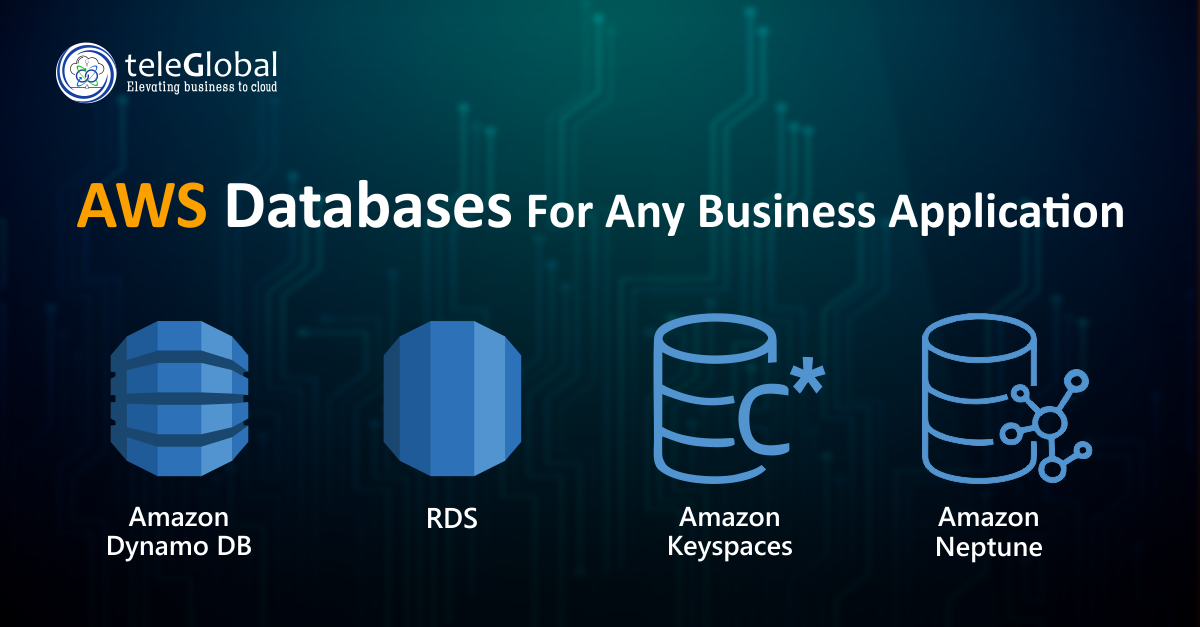
| Author: Abhinita Singh | Published: 10-Nov-2022 |
In today’s fast-paced digital landscape, data is at the heart of every successful business. Managing databases efficiently ensures smooth operations and supports business growth. Your database and how well you manage it is key to providing the best experience to your customers. You must be able to handle high data volumes with low to no downtime. While there are many database management services offered in the cloud, AWS’s service is probably the most preferred across organizations. This is because of its many features, such as its high data security, easy scalability, cost-effectiveness, and, of course, the fact that it is a fully-managed service. Every business has different needs and Amazon has a database to serve each one’s requirements.
Let’s explore some of the leading AWS database types:
AWS RDS is optimized for performance and memory and is available on several database instance types. It is easy to set up, operate, and manage in your cloud. You don’t need to worry about tasks like database setup, patching, or backups and recovery. It is fully managed by AWS and helps you save time and effort through the automation of routine administration.
Aurora is not just compatible with MySQL and PostgreSQL, it is five times faster than the standard version of MySQL and 3X faster than PostgreSQL. Plus it gives you the security, availability, and performance of a commercial database at a much lower cost. Aurora is managed by Amazon RDS and easy to automate, sparing you the effort of undertaking time-intensive administrative tasks.
Aurora offers the ideal database service for eCommerce, CRMs, and ERP applications.
DynamoDB is a nonrelational database, also referred to as a NoSQL database. This is because, unlike relational databases, they don’t use rows and columns to organize data. Rather they use structures, such as key-value pairs, wherein data is organized into keys (items) and each has values (attributes) attached.
Amazon Keyspaces is an Apache Cassandra-compatible database service. Apache Cassandra is an open-source data store designed to support large volumes of data. You can use Amazon Keyspaces to run your Cassandra workloads on AWS without writing new application code and using the same developer tools you use for Cassandra.
Amazon Keyspaces (for Apache Cassandra) is fully managed, highly scalable, and available. Since it is a fully managed offering, you don’t need to provision, patch, or manage servers, or install, maintain or operate the software. Like DynamoDB, Amazon Keyspaces is serverless, so you can eliminate the task of provisioning or managing servers.
Amazon Keyspaces scales up and down in response to traffic to your application, so you can serve thousands of requests a second.
Need a fast, reliable, fully managed database service to build and run applications working with highly connected datasets? Neptune is for you.
Amazon Neptune is a fully-managed graph database service, designed to store billions of relationships and run queries on the graph with millisecond latency. It supports graph languages like Apache TinkerPop Gremlin, SPARQL from W3C, and open Cypher, and lets you run queries and navigate highly connected data sets.
It is highly available and provides continuous backup to AWS S3, with data security features that support encryption at rest and in transit. As it is fully managed you’re spared data management tasks like hardware provisioning and software management.
Below are the use cases for Amazon Neptune:
Whether you’re building mobile apps, managing eCommerce platforms, or analyzing complex relationships in connected data, AWS offers a purpose-built database for every use case. From the automation of routine tasks to built-in security and seamless scalability, these fully managed services help businesses focus more on innovation and less on infrastructure.
Still, choosing the right database and managing it efficiently calls for the right expertise. The real power of AWS databases lies not just in their features, but in how well they’re implemented and optimized to meet your unique business needs.
Ready to make the most of what AWS databases have to offer? Now’s the time to explore smarter data strategies that scale with you.
AWS databases are cloud-based data storage services offered by Amazon Web Services that help businesses store, manage, and access data with scalability, security, and high performance.
AWS offers various types:
Each is built for specific use cases.
Amazon DynamoDB is ideal due to it’s low- latency, serverless architecture, and ability to scale automatically with demand.
Yes, Amazon RDS is widely used for business apps that require traditional relational databases like MySQL, PostgreSQL, or SQL Server. It’s fully managed and reliable.
Yes. AWS offers tools like Database Migration Service (DMS) to help migrate existing databases with minimal downtime.
 close
close

Hi there! At TeleGlobal, we turn your cloud vision into AI-accelerated reality. What challenge can we help you solve?
Powered by ![]() teleBot
teleBot